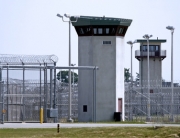It's been two years since Sacramento legislators implemented the CA prison realignment, and jails are still struggling to adapt to "the new normal".
It all started after a federal lawsuit alleged that conditions in state prisons were so overcrowded that inmates basic constitutional rights were being violated. Judges agreed, and ordered the corrections department trim populations to more than 137.5% of rated capacity.
Since opening the doors and letting criminals free just wasn't an option, elected officials reportedly came up with a different plan. Pass the buck to county jails.
Some have called the plan a necessary evil. Others have equated it to a large-scale experiment with the criminal justice system.
The Stanford Criminal Justice Center had interviewers reach out to more than 20 counties throughout the state. From there, they interviewed sheriff's deputies, offenders and police officials.
Several have said they are in support of the realignment, because now, instead of tossing people behind bars and throwing away the key, corrections officials are more focused on rehabilitation efforts.
This is a big win for inmate advocate groups, who have long pointed out thatch each year that California spends millions more on prison operations than it does on education.
Oddly enough, not a single person interviewed felt the realignment should be repealed. The state has long had the highest recidivism rates of anywhere in the US. Law enforcement officials are now hopeful this will change.
Prosecutors and probation officers are the least supportive, a trend that's likely tied to their now being overwhelmed with more work than their offices can handle.
The Stanford study results indicate the following.
First, it is too soon to correlate an increase in violent and property crime to the realignment. A number of police departments have been dealing with budget cuts and officer attrition. This also needs to be taken into account.
Second, although the realignment solved the problem of overcrowding at state prisons, it's caused that same problem at county jails. These facilities were never meant to hold inmates for more than a year, and counties are still scrambling to find ways to deal with the additional capacities.
As it stands, more than 100,000 offenders have been shifted to local detention facilities in the past two years. These jails are now holding increasingly serious offenders, because they are no longer being sent to prison.
In some cases, conditions have become so overcrowded that low-level offenses, like shoplifting, are no longer being prosecuted. Opponents of the realignment say they are concerned about the impact this is having on public safety.
Inmates say they support it, because in many cases, they are only serving half their ordered sentence. They are also not receiving the same type of post-release supervision, which means there are fewer opportunities for law enforcement officials to catch them engaging in criminal activity.
Several recommendations have since been made, including the creation of a tracking database that will allow counties to keep better track of former offenders. LA County Jails are set to test this type of system in the upcoming months.
The Attorney General is also looking into ways to measure recidivism rates. Once all this is available, they said, a more clear picture of the realignment will be available.
















Follow Us
Facebook
Twitter
Google +1
LinkedIn
Youtube